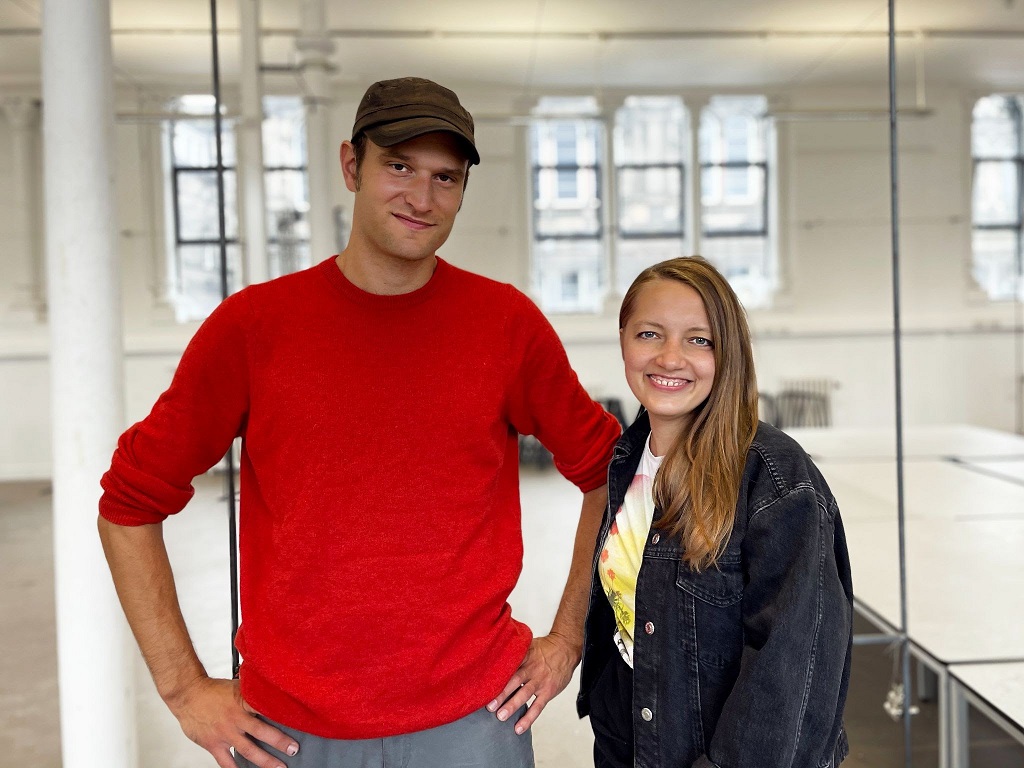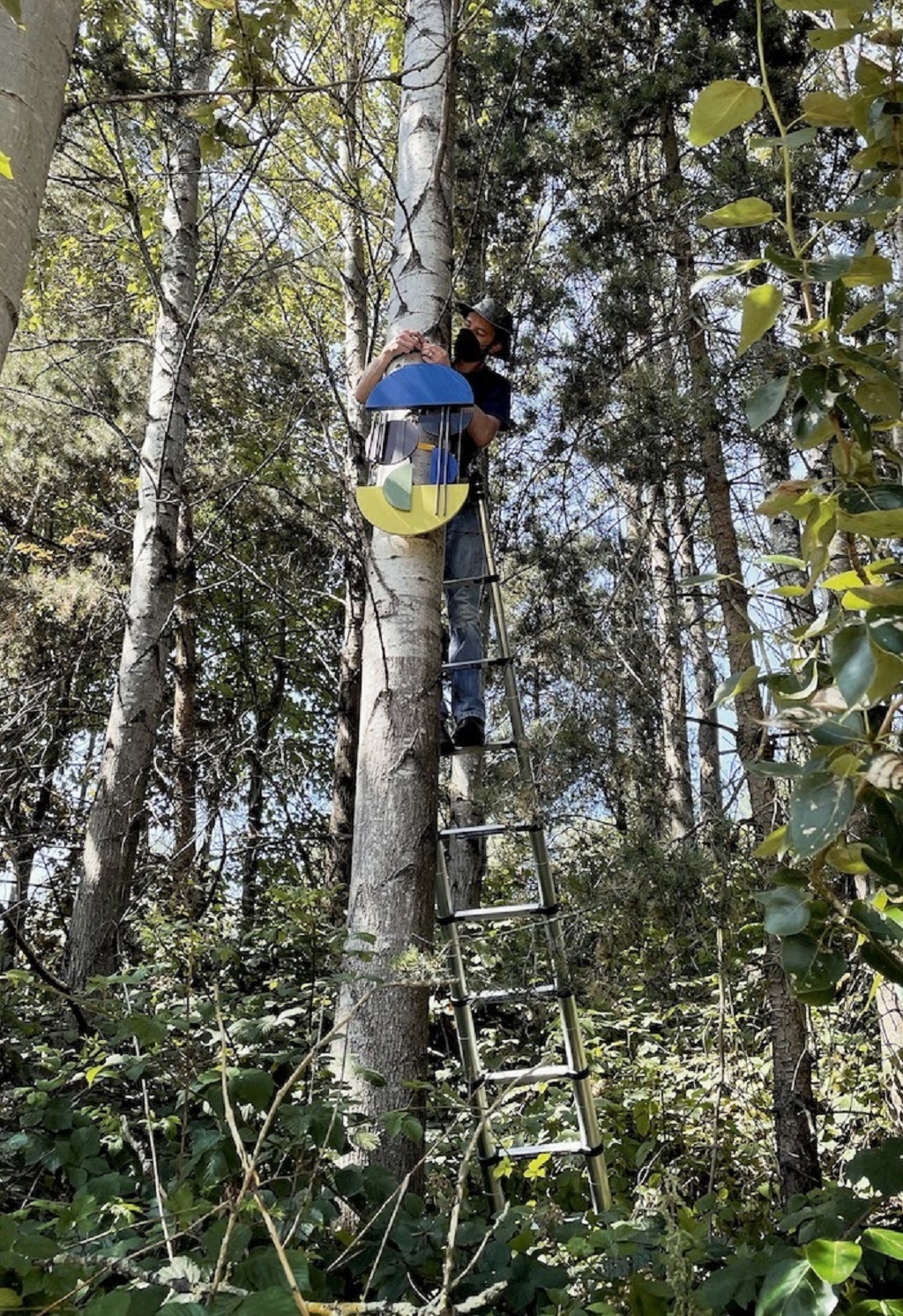
Canal art trail celebrating Scotland’s beautiful birds
Sculptures of birds have appeared in the trees along the Forth and Clyde Canal, as artists brighten walkway with installation created in collaboration with nature.
Chroma Calls is a new installation of 20 abstract sculptures by artists Yulia Kovanova and Lars Koens covering four miles of Forth and Clyde Canal as part of Canal Encounters.
Running until 29 August, the sculptures are designed to mirror the colour palette of different species including the Tufted Duck, Kingfisher and Mute Swan with installation locations guided by the birds.
Chroma Calls is a conjunction of the heritage, environment and communities of the Forth and Clyde Canal waterway.
Scottish-based artists Yulia Kovanova and Lars Koens are presenting their latest installation – Chroma Calls as part of Canal Encounters – a month-long celebration of Scotland’s Forth & Clyde Canal. Commissioned by Falkirk Community Trust and Scottish Canals, the artists are exhibiting 20 sculptures drawing attention to the ecology of the canal and some of the local and visiting bird species.

Lars Koens and Yulia Kovanova
Each of the 20 sculptures are based on the colourful plumage of specific bird species that live or visit the canal. They are attached to trees along four miles of Forth and Clyde Canal from the iconic Kelpies to the Falkirk Wheel, the world’s only rotating boat lift.
The artists worked with ecologist and Scottish Canals environmental manager, Olivia Lassiere to select some of the most iconic bird species to feature in the canal and the adjacent walking and cycling path.
Each sculpture, through an abstracted arrangement of colour, conjures the particular chromatic patterns by which each species attracts others of its kind. Designed to move in the wind, the sculptures create sounds that carry along the canal.
In addition to easily recognisable birds, such as the Robin and Mute Swan, the artists also included such species as the Tufted Duck and Kingfisher, who may be less common or more hidden in the area. Most of the bird species the artists focused on are known to be present during the month of August when the sculptures are on show.
The simple compositions draw attention to colours that would otherwise go unnoticed, such as the red of the Coot’s eye, the silvery glow of the Jackdaw’s feathers, and the pink legs of the herring gull. In the process of colour coding, the artists discovered the complexity of bird colours, with the colour palettes of birds depending on a range of variables, including age, gender, season, lighting and is furthermore different per individual. The sculptures are made out of wood, primarily birch and bamboo, and utilising eco-friendly paint, in keeping with the celebration of the Forth and Clyde canal ecology.
In addition to the birds’ body parts, the minimal shapes of the sculptures – circles, semi-circles and lines – echo the canal’s industrial and natural features: the canal, its locks and its bridges relate to linear shapes, and the Falkirk Wheel has circular and semicircular shapes. As a result, Chroma Calls is a conjunction of the heritage, environment and communities of the waterway.

Patrick Fulton installing Chroma Calls Blue Tit Portrait
The artists worked together with a tree house specialist Patrick Fulton, to build and secure the sculptures to various tree species, as well as other Canal structures.
Yulia said: ‘Chroma Calls was truly a collaborative process. When it came to installing the sculptures we were guided by the local and visiting birds alighting on the trees or the canal nearby. As we worked on the project, I myself developed attentiveness towards the rich wildlife of the Canal.
‘I had to look more intently than I would normally do: to search for the birds, to spot the right trees, to find the best match. For me, the sculptures evoke more consideration of our surroundings.
‘In order to observe those bird species that live along the canal, you must have that kind of attentiveness, or else they simply drift into the background. The canal is so rich with life, you can see it all if you pay attention.’
The work evolved from previous collaborations between Lars Koens and Yulia Kovanova, such as Colony and ‘Grey to Blue: Ecological Entanglements.’ Colony focused on another bird species that visits Scotland on their migratory route – the Arctic tern. The latest iteration of Colony was presented in 2020 in An Tobar Gallery on the Isle of Mull. Grey to Blue: Ecological Entanglements was part of Edinburgh Art Festival 2019.
For further information visit www.scottishcanals.co.uk.
TAGS

